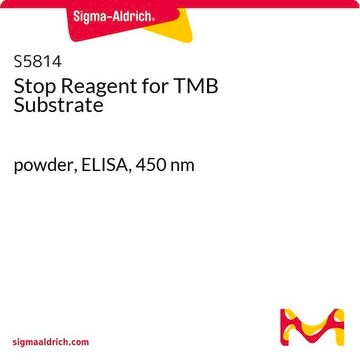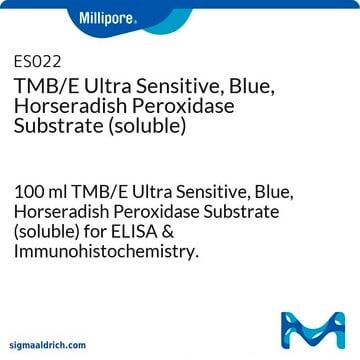T0565
3,3′,5,5′-Tetramethylbenzidine
TMB membrane substrate, chromogenic, liquid
Synonym(s):
TMB membrane substrate
About This Item
Recommended Products
product name
3,3′,5,5′-Tetramethylbenzidine (TMB) Liquid Substrate System for Membranes, ready to use solution
Quality Level
form
liquid
storage temp.
2-8°C
Related Categories
General description
Application
- enzyme-linked immune absorbent spot (ELISPOT) assay
- as a substrate for IgG peroxidase
- in the visualization of immunocomplexes
Physical form
Storage Class Code
12 - Non Combustible Liquids
WGK
WGK 3
Flash Point(F)
Not applicable
Flash Point(C)
Not applicable
Certificates of Analysis (COA)
Search for Certificates of Analysis (COA) by entering the products Lot/Batch Number. Lot and Batch Numbers can be found on a product’s label following the words ‘Lot’ or ‘Batch’.
Already Own This Product?
Find documentation for the products that you have recently purchased in the Document Library.
Customers Also Viewed
Articles
This discussion will highlight some of these methodologies, namely, the use of Multiple Reaction Monitoring (MRM) and Protein-AQUA.
NBT-BCIP substrate system aids in western blotting and immunohistological staining, producing a blue-purple insoluble end product.
Our team of scientists has experience in all areas of research including Life Science, Material Science, Chemical Synthesis, Chromatography, Analytical and many others.
Contact Technical Service










